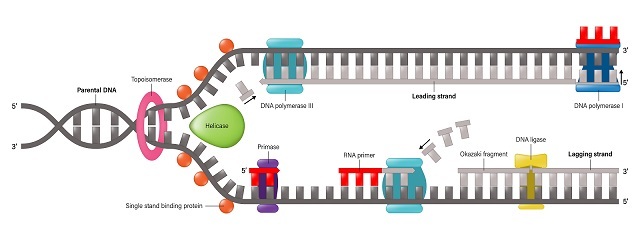
 Data Structure
Data Structure Networking
Networking RDBMS
RDBMS Operating System
Operating System Java
Java MS Excel
MS Excel iOS
iOS HTML
HTML CSS
CSS Android
Android Python
Python C Programming
C Programming C++
C++ C#
C# MongoDB
MongoDB MySQL
MySQL Javascript
Javascript PHP
PHP
- Selected Reading
- UPSC IAS Exams Notes
- Developer's Best Practices
- Questions and Answers
- Effective Resume Writing
- HR Interview Questions
- Computer Glossary
- Who is Who
Primer Walking - An Overview
Introduction
Primer walking is a technique used in molecular biology for DNA sequencing. It involves designing a series of overlapping primers to amplify small regions of DNA, one at a time, until the entire sequence of interest has been covered. The resulting sequence data can be used to study the structure and function of genes, identify mutations, and diagnose genetic disorders.
The concept of primer walking was first proposed in the early 1990s, when automated DNA sequencing machines were becoming more widely available. Prior to this, DNA sequencing was a labor-intensive process that involved manually sequencing short pieces of DNA using gel electrophoresis.

Automated sequencing machines made the process much faster and more efficient, but they were still limited in their ability to sequence long stretches of DNA in a single run. Primer walking offered a solution to this problem, allowing researchers to sequence longer stretches of DNA by piecing together smaller fragments.
The basic principle of primer walking is simple. Starting with a known sequence of DNA, researchers design a series of overlapping primers that will amplify small regions of DNA, one at a time. The first primer is designed to anneal to the known sequence, and the resulting PCR product is sequenced. The sequence data from the first PCR product is then used to design the next primer, which anneals just beyond the end of the first PCR product. This process is repeated, with each subsequent primer annealing just beyond the end of the previous PCR product, until the entire sequence of interest has been covered.
Advantages
There are several advantages to using primer walking for DNA sequencing. First, it allows researchers to sequence longer stretches of DNA than would be possible with a single sequencing run. This is particularly useful when studying large genes or entire genomes.
Second, it provides a way to check the accuracy of sequencing data, as each PCR product is sequenced multiple times. Finally, it allows researchers to identify mutations or other variations in the DNA sequence that may be missed by other sequencing methods.
However, there are also some limitations to the technique. One of the biggest challenges with primer walking is designing the overlapping primers. If the primers are not designed properly, they may not anneal to the DNA or may anneal to multiple regions, resulting in non-specific amplification. This can lead to gaps or errors in the final sequence data. Additionally, primer walking can be time-consuming and labor-intensive, as each PCR product must be sequenced individually.
Despite these challenges, primer walking remains an important tool in molecular biology. It has been used to sequence a wide range of organisms, from bacteria to plants to humans. It has also been used in a variety of applications, from studying the evolution of species to identifying genetic mutations associated with disease.
One notable example of the use of primer walking is the Human Genome Project. This ambitious project, launched in 1990, aimed to sequence the entire human genome. Initially, the project relied on a shotgun sequencing approach, in which the genome was randomly fragmented and sequenced in small pieces. However, this approach had limitations, as it could not accurately sequence highly repetitive regions of the genome. To overcome this challenge, the project turned to primer walking, using a combination of automated sequencing machines and manual sequencing techniques. Over the course of several years, the project successfully sequenced the entire human genome, providing a wealth of information about human genetics and paving the way for future research in genomics and personalized medicine.
Conclusion
Primer walking is a powerful technique for DNA sequencing that allows researchers to sequence longer stretches of DNA and identify mutations and other variations in the sequence. While it has some limitations and can be time-consuming, it remains an important tool in molecular biology and has been used in a variety of applications, from studying evolution to identifying disease-causing mutations. As sequencing technologies continue to advance, primer walking is likely to remain as a powerful tool.
FAQs
Q1. What is primer walking?
Ans. Primer walking is a technique used in molecular biology for DNA sequencing. It involves designing a series of overlapping primers to amplify small regions of DNA, one at a time, until the entire sequence of interest has been covered.
Q2. Why is primer walking used for DNA sequencing?
Ans. Primer walking is used for DNA sequencing because it allows researchers to sequence longer stretches of DNA than would be possible with a single sequencing run. It also provides a way to check the accuracy of sequencing data and can identify mutations or other variations in the DNA sequence that may be missed by other sequencing methods.
Q3. What are the advantages of using primer walking for DNA sequencing?
Ans. The advantages of using primer walking for DNA sequencing include the ability to sequence longer stretches of DNA, the ability to check the accuracy of sequencing data, and the ability to identify mutations or other variations in the DNA sequence.

